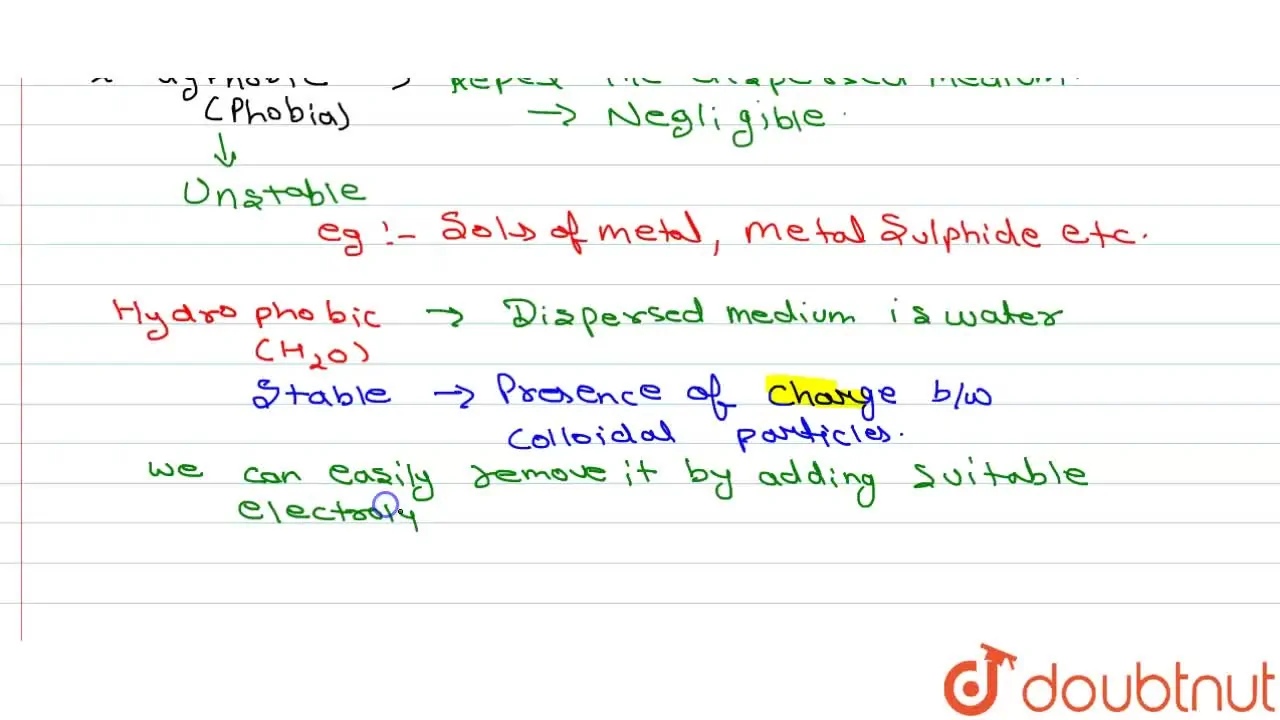What are lyophilic and lyophobic sols?Give one example of each type ? Why is hydrophobic sol easily coagulated ?
Video Solution
Text Solution
Lyophilic colloids (solvent loving) are those substaces that directly pass into the colloidal state when brought-in contact with the solvent, e.g. proteins, strach, rubber, etc. These sols are quite stable because of the strong attractive forces between the particles of disperse phase and the dispersion medium.
Lyophobic colloids (solvent hating) are those substances that do not form the colloidal sol readily when mixed with the dispersion medium. These sols are less stable than the lyophilic sols. Examples of lyophobic sols include sols of metals and their insoluble compound like sulphides and hydroxides. The stability of hydrophobic sol is only due to the presence of charge on the colloidal parties. If charge is removed e.g., by addition of suitable electrolytes, the particles will come nearer to each other to form aggregate, i.e., they will coagulate and settle down. On the other hand, the stability of hydrophilic sol is due to charge as well as solvation of the colloidal particles. Thus, for coagulation to occur easily both the mentioned factors have to be removed.
|
Updated on:21/07/2023
Related Playlists
Similar Questions
What are lyophilic and lyophobic sols ? Give one example of each type. Which one of these two types of sols is easily coagulated and why?
View SolutionWhat are lyophobic colloids? Give one example for them.
View SolutionWhat is aneuploidy and polyploidy? Give one example of each.
View SolutionWhat are natural and synthetic polymers ? Give two examples of each type.
View SolutionGive one example each of sol and gel.
View SolutionWhat are analgesics and antipyretics ? Give one example in each case.
View SolutionGiven one example each of lyophobic sol and lyophilic so .
View SolutionWhich one of these is a lyophobic sol?
View SolutionDistinguish between lyophilic and lyophobic sols.
View SolutionWhat are the two main types of matter? Give two examples for each type?
View Solution


